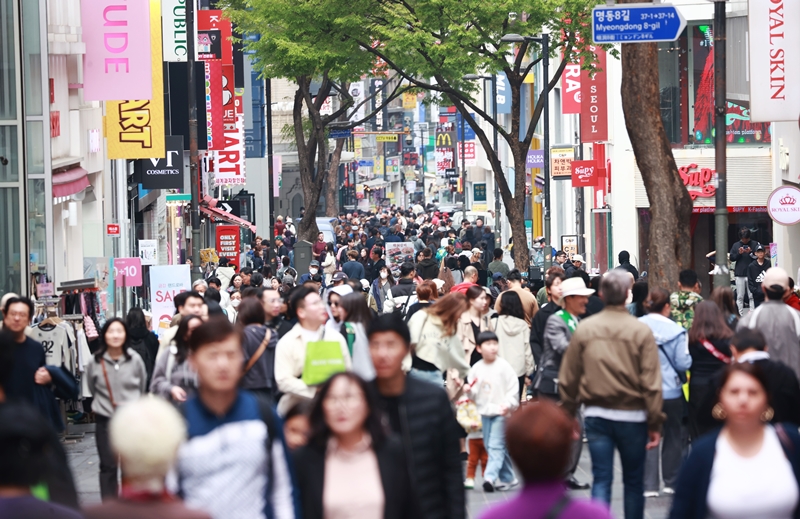
Expats are expected to account for 6.9% of the national population in 20 years. Shown is an April 10 shot of the tourist-heavy Myeong-dong neighborhood in Seoul's Jung-gu District. (Yonhap News)
By Lee Kyoung Mi
The number of foreign residents will rise to 7% of the national population in 20 years, a newly released report says.
Statistics Korea on April 11 made this prediction in its study of population projections for both Koreans and expats from 2022-42 using 2022 data.
The data was used to make population forecasts by policy target including pension and welfare, foreign residents, and multicultural education and families using three scenarios (medium, high and low) that combined assumptions on births, deaths and immigration to account for uncertainty in such projections.
The high scenario assumed bigger levels of the birth rate, life expectancy and net international migration, or the number of arrivals minus that of departures.
The medium scenario saw the national population decline from 51.67 million in 2022 to 49.63 million in 2042, with the percentage of Koreans dropping from 96.8% (52 million) to 94.3% (46.77 million).
The number of foreign residents, however, was seen to rise from 1.65 million to 2.85 million over the 20-year period, up 80% from 2022 and boosting their share of the population from 3.2% to 5.7%.
In the high scenario, the foreign population was seen to grow to 3.61 million or 6.9%.
Change was more pronounced for the working-age population group of ages 15-64. The medium scenario forecast the number of such people to drop from 35.27 million in 2022 to 25.73 million in 2042 but that of the foreign working-age group to jump from 1.47 million to 2.36 million.
For residents with an immigrant background, the number was seen to jump from 2.2 million in 2022 to 4.04 million in 2042, raising that demographic's population share from 4.3% to 8.1%. A person in this group is defined as someone born abroad or with one immigrant parent, naturalized citizen, second-generation immigrant or foreign national.
The number of naturalized citizens is expected to more than double from 220,000 in 2022 to 520,000 in 2042 and that of second-generation immigrants from 330,000 to 670,000.
km137426@korea.kr